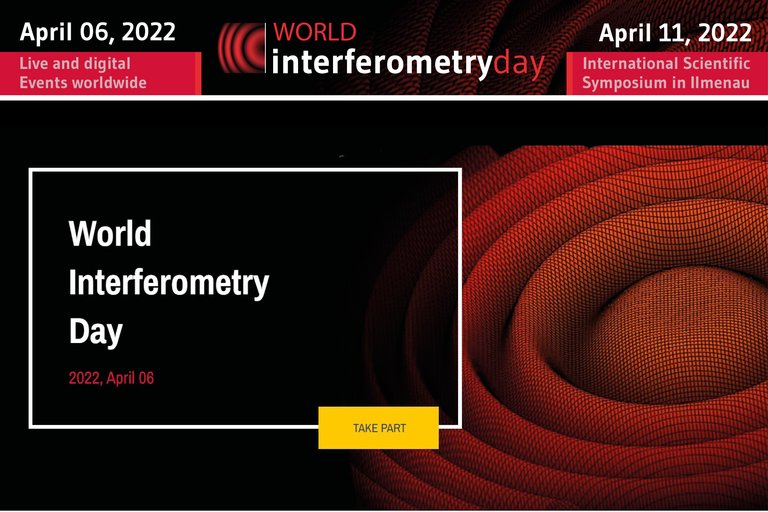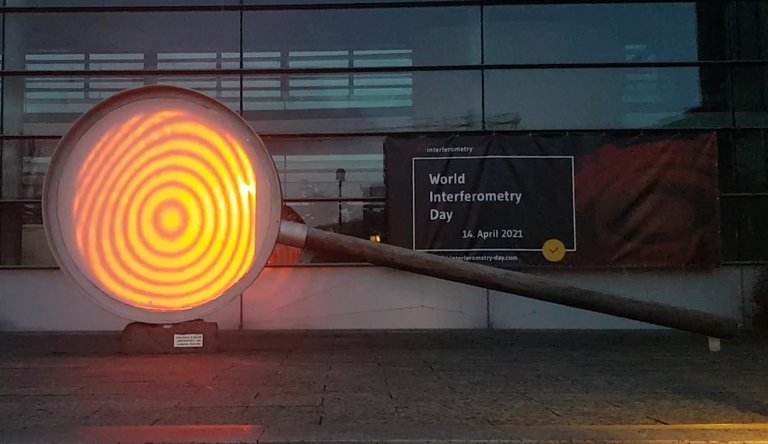On April 6, TU Ilmenau celebrates the "World Interferometry Day" for the second time to commemorate the groundbreaking development of the interferometer. All interested parties are invited to actively participate in the design of the World Interferometry Day and the associated International Scientific Symposium on April 11.

The ingenious invention of the interferometer by Albert Abraham Michelson over 140 years ago has become synonymous with high-precision measurement technology. Interference occurs when two or more wave trains (everyone knows this from water waves) overlap. Technical interferometers work on the basis of light, in which light waves with the unimaginably small wavelength of a few hundred nanometers interfere. The resulting interference allows the smallest movements to be detected and measured with the greatest accuracy. Like no other technology, interferometry thus embodies the art of measuring extraordinarily small quantities and effects. Pushing technology to its limits and challenging it to ever new heights - that is the credo of modern laser interferometry. TU Ilmenau has been a leader in this field for many years.
World Interferometry Day will be celebrated on April 6 from 4 p.m. with a variety of activities in front of and inside the Ernst Abbe Center on the Unicampus to bring interferometry to a wide audience. Planned activities include interference image projections, interference experiments, laser animations and more. The evening will conclude with a contribution by Professor Eberhard Manske on his laser harp.
Five days later, on April 11, an international scientific symposium with contributions from guest speakers from Germany, Belgium, Japan and the United States will follow to further strengthen scientific collaboration in the field of interferometry and precision metrology.
Creative contributions to the design of this year's World Interferometry Day are very welcome, emphasizes organizer Professor Manske:
In 2022, we look forward to events in attendance on both days. Both the symposium on April 11 and the demonstrations on April 6 are open to all interested people, employees and students of the university. Participation is free of charge.
Professor Manske heads the Institute for Process Measurement and Sensor Technology(PMS) at TU Ilmenau, which is a world leader in the field of precision measurement technology. This is reflected, among other things, in the DFG Collaborative Research Center Nanomeasurement and Positioning Machines, which is funded for the maximum duration of eleven years, and the DFG Research Training Group "NanoFab", which is currently already in a second funding phase.
Together with the managing director of SIOS Meßtechnik GmbH, Dr. Denis Dontsov, Prof. Manske had initiated and organized the World Interferometry Day 2021 for the first time. The company, which was founded in 1991 out of the PMS Institute, specializes in high-precision laser interferometry and produces the most accurate nanometer measuring and positioning machines in the world on the basis of research results from the TU Ilmenau.
Last year's 1st World Interferometry Day took place largely online due to the pandemic. Nevertheless, the organizers were already able to register a great response. In response to the call to participate in the design of the new World Day, numerous online contributions - experiments, actions and lectures - from all over the world arrived at the TU Ilmenau. From the international scientific community and other interested parties, the initiators also received a great deal of appreciation for the idea of establishing an anniversary that will significantly increase the visibility of the importance of interferometry and research in this field for countless fields of application.
Applications for contributions to World Interferometry Day on April 6, 2022, are available here. The program, registration and further information on the International Scientific Symposium on April 11, 2022 can be found here.


